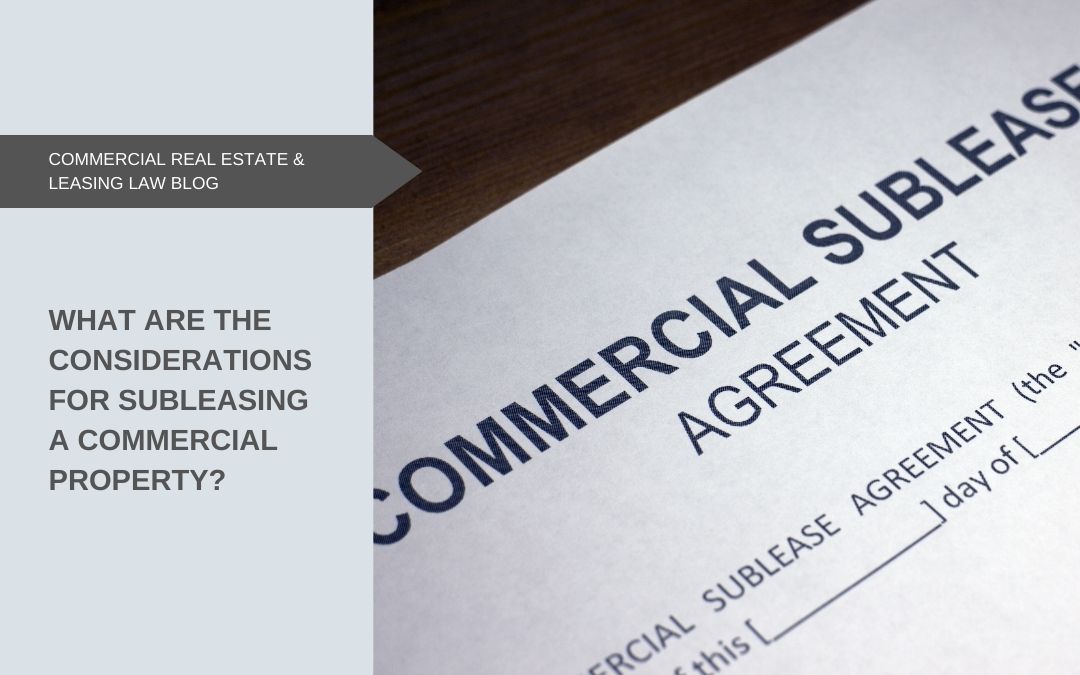Subleasing a commercial property occurs when the original tenant (the sublessor) leases the space to a third party (the sublessee) while still being responsible to the original landlord (the head landlord). Before subleasing a commercial property, several important considerations should be taken into account.
Review the Lease Agreement
Carefully review the original lease agreement between the head landlord and the sublessor. Look for any restrictions or clauses related to subleasing. Some leases may prohibit subleasing altogether, while others may require the landlord’s consent.
Obtain Landlord’s Consent
If subleasing is permitted or requires landlord consent, contact the head landlord to discuss the intention to sublease. Seek formal written consent before proceeding with any subleasing arrangements. The landlord may have specific requirements or conditions that need to be met.
Evaluate the Sublessee
Conduct a thorough evaluation of potential sublessees to ensure they are financially stable and suitable for the commercial property. Consider their business operations, reputation, financial standing, and compatibility with the property and existing tenants.
Sublease Agreement
Draft a comprehensive sublease agreement between the sublessor and the sublessee. This agreement should outline the terms and conditions of the sublease, including rent payment, sublease duration, permitted use, maintenance responsibilities, and any other relevant provisions. It is advisable to seek legal advice to ensure the sublease agreement aligns with the original lease and complies with local laws.
Understand Responsibilities
While the sublessee pays rent to the sublessor, the sublessor remains responsible for fulfilling the obligations outlined in the original lease agreement with the head landlord. This includes rent payment, maintenance, repairs, compliance with lease terms, and any other responsibilities stipulated in the original lease. The sublessor should communicate these obligations clearly to the sublessee.
Liability and Indemnification
Address liability and indemnification in the sublease agreement. Determine the extent to which the sublessee will be responsible for damages, liabilities, and any potential breaches of the original lease. Consider including provisions for insurance coverage and risk allocation between the parties.
Notify the Head Landlord
Inform the head landlord about the sublease arrangement. Provide any required documentation, such as the sublease agreement, financial information about the sublessee, and any other requested details. Maintain open communication with the head landlord throughout the subleasing period.
Rent Collection and Payment
Establish a clear process for rent collection from the sublessee and ensure timely payment to the head landlord. It is the sublessor’s responsibility to ensure that rent is paid to the head landlord as per the original lease terms.
Compliance with Laws and Regulations
Ensure that the sublease arrangement complies with local laws, zoning regulations, and any other applicable requirements. This includes obtaining any necessary permits or licenses for the sublessee’s business activities.
Monitoring and Communication
Maintain open lines of communication with the sublessee and monitor their activities in the property. Address any concerns or issues promptly to maintain a harmonious relationship and compliance with the sublease agreement.
Subleasing commercial property requires careful consideration of legal obligations, financial implications, and effective communication among all parties involved. It is recommended to consult with legal professionals experienced in commercial real estate to ensure compliance with the original lease agreement and relevant laws, and to protect the interests of all parties involved.

